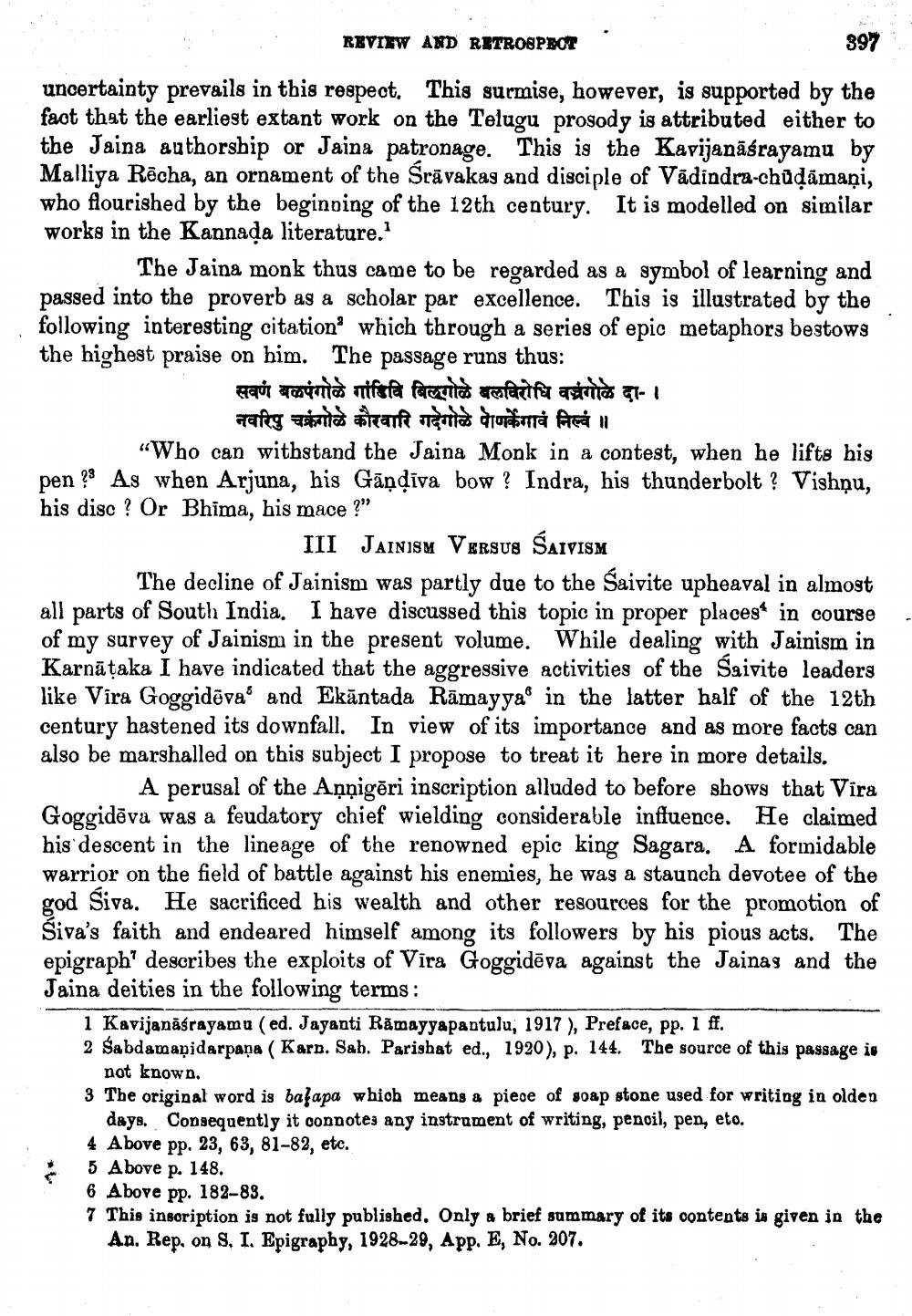________________
REVIEW AND RETROSPECT
397
.
uncertainty prevails in this respect. This surmise, however, is supported by the fact that the earliest extant work on the Telugu prosody is attributed either to the Jaina authorship or Jaina patronage. This is the Kavijanāśrayamu by Malliya Rêcha, an ornament of the Śrāvakas and disciple of Vādindra-chūdāmaņi, who flourished by the beginning of the 12th century. It is modelled on similar works in the Kannada literature.
The Jaina monk thus came to be regarded as a symbol of learning and passed into the proverb as a scholar par excellence. This is illustrated by the following interesting citation which through a series of epic metaphors bestows the highest praise on him. The passage runs thus:
सवर्ण बळपंगोळे गाडिवि बिलगोळे बलविरोधि वज्रगोळे दा-।
नवरिपु चक्रंगोळे कौरवारि गर्दगोळे पाणगावं नित्वं ॥ “Who can withstand the Jaina Monk in a contest, when he lifts his pen ? As when Arjuna, his Gāņdīva bow ? Indra, his thunderbolt ? Vishņu, his disc? Or Bhima, bis mace ?"
III JAINISM Versus SAIVISM The decline of Jainism was partly due to the Saivite upheaval in almost all parts of South India. I have discussed this topic in proper places in course of my survey of Jainism in the present volume. While dealing with Jainism in Karnāțaka I have indicated that the aggressive activities of the Saivite leaders like Vira Goggidēva' and Ekāntada Rāmayya in the latter half of the 12th century hastened its downfall. In view of its importance and as more facts can also be marshalled on this subject I propose to treat it here in more details.
A perusal of the Aņņigēri inscription alluded to before shows that Vira Goggidēva was a feudatory chief wielding considerable influence. He claimed his descent in the lineage of the renowned epic king Sagara. A formidable warrior on the field of battle against his enemies, he was a staunch devotee of the god Siva. He sacrificed his wealth and other resources for the promotion of Siva's faith and endeared himself among its followers by his pious acts. The epigraph? describes the exploits of Vira Goggidēva against the Jainas and the Jaina deities in the following terms:
1 Kavijanaśrayamu (ed. Jayanti Rămayyapantulu, 1917 ), Preface, pp. 1 ff. 2 Sabdamapidarpana ( Karn. Sab. Parishat ed., 1920), p. 144. The source of this passage is
not known. 3 The original word is balapa which means & piece of soap stone used for writing in olden
days. Consequently it connotes any instrument of writing, penoil, pen, eto. 4 Above pp. 23, 63, 81-82, etc. 5 Above p. 148. 6 Above pp. 182–83. 7 This inscription is not fully published. Only a brief summary of its contents is given in the
An. Rep, on S, I. Epigraphy, 1928-29, App. E, No. 207.




